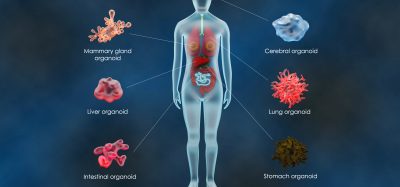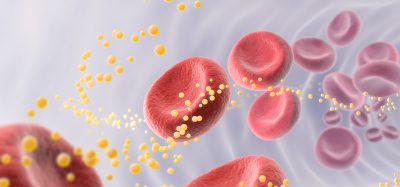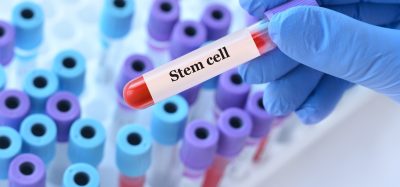On the CRISPR horizon: democratising access to genome-editing technologies
Posted: 16 December 2022 | Dr David Walter (Functional Genomics Centre), Dr Douglas Ross-Thrieplands (Functional Genomics Centre) | No comments yet
Dr Douglas Ross-Thriepland and Dr David Walter, from the Functional Genomics Centre (FGC) – a joint venture between Cancer Research UK’s (CRUK) drug discovery engine, Cancer Research Horizons, and AstraZeneca – speak to Drug Target Review about their work. The centre’s focus is on genetic screening; cancer models; CRISPR reagent design and computational approaches to big data processing, all with the aim of accelerating the discovery of new cancer medicines. Here, Doug and David explore the aims of the FGC and their plans to broaden access to CRISPR technologies.
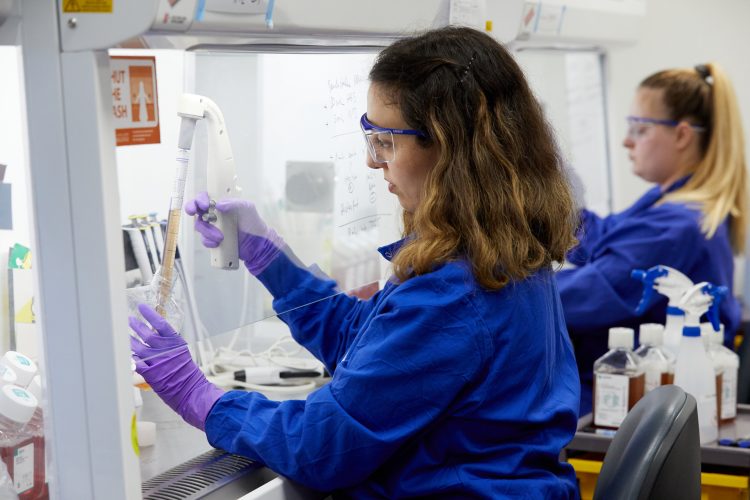

Can you tell me a bit about yourselves?
Doug: As the Director of the Functional Genomics Centre, I work in close partnership with David to manage the centre of 22 scientists focused on using CRISPR gene editing for target discovery in cancer. I have been in early pharmaceutical R&D over a decade with eight of those years at AstraZeneca working on target discovery platforms. I have a PhD in virology from the University of Leeds and I am passionate about bringing new medicines to patients in different disease areas. My current focus at the FGC is on using CRISPR to help understand the biology of cancer and discover new drug targets.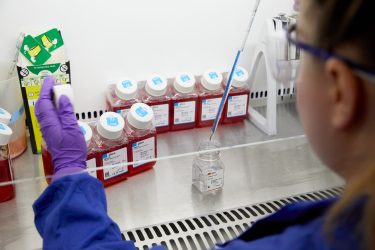

David: I am a Group Leader at Cancer Research Horizons and the CRUK lead of the FGC having worked here with Doug since the centre opened its doors three years ago. I have eight years of experience in functional genomics and pre-clinical oncology R&D. I gained my PhD in cell biology from the University of Basel, Switzerland and completed my post-doctoral studies at the University of Copenhagen in Denmark, where I studied the role of cell cycle regulators in genome maintenance.
What does the FGC do and what are its goals?
Doug: Selecting the right target is the single most important decision we make in the drug discovery process, because it determines how effective a medicine could be at altering the course of disease. At the FGC, we develop CRISPR technologies to better understand the biology of cancer, discover new drug targets and create pre-clinical cancer models that are more reflective of human disease. Our efforts contribute to our understanding of mechanisms drug resistance, help us develop new combination therapies and identify novel biomarkers for patient selection in clinical trials.
CRISPR is a powerful technology that enables us to interrogate every gene in the genome and deliberately activate or suppress – “knock out” – specific genes, to help us pinpoint those that may cause or worsen disease, as well as those with potentially protective effects. For example, CRISPR can help identify genes involved with resistance to an existing cancer drug, the expression of an antibody-drug conjugate surface receptor, or even the complex interplay between a cancer cell and an immune cell. The unbiased nature of genome‑wide screening creates new insights that accelerate research for AstraZeneca, Cancer Research Horizons and CRUK academics.
David: Our vision is to be a world leading centre for functional genomics by 2025, that identifies new cancer biology, creates best in class CRISPR reagents and informatics and democratises access to the technologies to the wider community. Although we are based in Cambridge, UK, the FGC is a national facility. We collaborate with research groups, provide access to functional genomics capabilities at a national level and support CRUK-funded academics across the UK. We believe that by applying novel CRISPR technologies in this way, we will help accelerate the translation of basic research to patient benefit.
How was the partnership between AstraZeneca and CRUK formed and how has this helped you advance your CRISPR screening platform?
David: The FGC partnership between CRUK and AstraZeneca was established in 2019, with the aim to create a joint screening centre where the science and screening technology is shared, but the screening “output” is proprietary and independent for each party. Although running independent projects came with initial design challenges, it is now what makes this charity-industry partnership so unique. Through the partnership, we quickly created the expertise and knowledge to design, optimise, screen and analyse functional genomic screens using tools like CRISPR. Coming together as a joint team also means we can share learnings and methods across projects whether they are AstraZeneca or CRUK sponsored. We have accelerated our learnings and improved our methods and technologies as a direct result of the partnership.
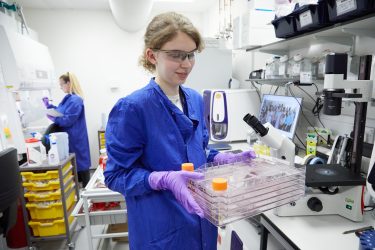

Doug: Collaboration and partnership really are our superpowers. Having AstraZeneca and Cancer Research Horizons scientists work side by side, in the same laboratory and jointly deliver independent projects to both organisations has been critical in the early success of the FGC. It not only helped us accelerate our learnings, but it also gave us access to diverse scientific expertise from both organisations to solve the challenging problems we face in cancer target discovery. This is critically important since we dedicate 20 percent of our effort to benchmarking and establishing new technologies, with the aim to deliver more complex projects in the future. All intellectual property of our technologies is co-owned by the partnership, with freedom to use and distribute by both parties, thus democratising access to the technology.
Bringing together CRUK, with its large network of academics working on basic cancer biology and AstraZeneca, a world leading biopharmaceutical company, generates synergies at all levels that is accelerating turning science into medicines for patients who need them the most.
What are some of the FGC’s biggest achievements?
Doug: I think one of our greatest achievements so far is starting from scratch in 2019, with no building, no scientists and no reagents, establishing a team of 22 expert scientists in three years. By the end of 2023, we will have completed over 50 discovery projects with 130 different CRISPR-Cas9 cell models and 420 individual CRISPR screens, with the majority of the work achieved against the odds during a global pandemic. It typically takes up to two years of validation work after a screen to build confidence in a new hypothesis and see thereafter an impact on drug development. However, we are already seeing results, with three new targets entering the AstraZeneca drug discovery portfolio in 2022 and one new patent for a biomarker for patient selection.
David: We have found the independent assessment of available CRISPR technologies incredibly valuable in helping us to identify what works and where further improvement is required. One of our early projects was the independent evaluation of all available CRISPR guide RNA selection algorithms, which helped us to design a smaller, optimised and more efficient CRISPR library. This means genome-wide CRISPR screens now require 50 percent fewer consumables, reducing cost by 40 percent while retaining the original assay sensitivity and specificity. This is an excellent example of how advancing science and innovation can have a positive impact on sustainability, while increasing access for academics to the FGC through reduced cost.
What are the biggest challenges in the CRISPR field at the moment? How are you aiming to tackle these challenges?
Doug: The cell models used as screens in target discovery and functional genomics remain a major challenge in the CRISPR field. The complexity of genetics often means that it is difficult to establish disease-relevant models or establish the desired genetic sub-type in a screen. While CRISPR tools for gene editing are evolving, an accurate disease model remains a key challenge for the field. Smaller CRISPR libraries can help reduce the amount of precious, often scarce, material required, but for these efforts to be successful it is important to align disease biology with the screening technology. For this reason, the real challenge is to create an ecosystem that brings together the expertise of CRISPR scientists and informaticians with the expertise of disease scientists. Accordingly, at FGC all our projects are always a close collaboration with the sponsors, informaticians and our screening team. What is so special about the FGC is that when we put this to practice and learn to screen in a new type of biology, for example T cells, we can rapidly apply all the knowledge we gained in the next project, whether it is AstraZeneca or CRUK.
David: Accessibility is another significant challenge – CRISPR technology is easy to start, but hard to finish. While it is relatively easy for academics to access reagents and methods, it requires experience and knowledge to translate them into a high-quality and high-confidence screen, without which projects can fail. The scale of the screens is another challenge due to the vast amounts of tissue culture needed. The real power of CRISPR is unlocked only when pooled hits across multiple screens are available and there are only a few labs that can achieve this at scale. At the FGC, we operate at a scale that makes this possible and we can deliver large projects fast and efficiently. Giving access to non-CRISPR scientists to apply this powerful technology at our dedicated centre is a foundational aim of the FGC.
Who can access the FGC and how can researchers get in contact and collaborate with you?
David: Scientists from AstraZeneca, Cancer Research Horizons and CRUK-funded academics can sponsor projects into the FGC for us to collaborate on. Every project goes through a simple governance cascade to ensure that the right biological question is being asked, that it is technically feasible to answer it with functional genomics and that it aligns with the priorities of CRUK and AstraZeneca, respectively. To access the centre, you need to have CRUK funding, be based in a CRUK-funded centre or collaborate with Cancer Research Horizons.
What are your plans in the future then to enable even wider access to this CRISPR technology?
Doug: Democratising access to pooled CRISPR is an important part of our vision. Currently we do this by enabling CRUK academics, AstraZeneca and Cancer Research Horizons scientists to sponsor projects into the FGC, where we do the end-to-end experimental work to design, optimise, screen and analyse. This enables scientists to use the power of pooled CRISPR in their research, but without the upfront investment required in terms of time, money and expertise to learn the methods, acquire the reagents and develop analysis pipelines. However, there will always be a limit to the capacity of the FGC and it is our vision to enable scientists in the wider academic community to do screening in their laboratories by 2025. We plan to establish simple, open access step-by-step methods and share critical reagents like ready-to-use CRISPR libraries and modular computational pipelines. We have already taken the first step with a new pilot mentoring scheme with four academic labs on how to do CRISPR screening in their labs. In return, we are learning what their challenges are and how we can adapt and simplify our reagents and methods to make their use easier.
David: We also consider training an important element of democratisation. In the future we hope to host scientists at the FGC to learn CRISPR side-by-side with AstraZeneca and Cancer Research Horizons scientists. Such interactions and collaborations will progress important research in cancer and bring exciting new biology into the centre bringing to life our ambition to be a world leading centre.
What is next on the horizon for you?
David: Our partnership makes it easy for AstraZeneca and CRUK to collaborate on joint projects, with shared ‘output’ and data from screens available for both organisations. We recently completed our first joint project investigating how radiation therapy can be improved through combination therapy. It was a tremendous success and the project could not have been achieved without high level expertise and collaboration. We are intent on continuing such collaborations at the FGC.
Doug: Science is a team game which requires diverse expertise to tackle challenging problems and nowhere is this more true than when developing new technology. We collaborate with external scientists to help drive our technology development forward and try to publish as much as we can in the ‘tech dev’ domain. It is important to be active in the community to make it possible to develop the right tools to answer the next question. In our collaborations, both parties contribute their expertise in kind and have freedom to operate and use the knowledge. The approach is critical for progressing early technology development projects and we see it as an increasingly important part of how FGC operates in the future.
What are some of the most exciting trends or innovations happening in the CRISPR field? How are you embracing these?
David: Functional genomics is a rapidly evolving drug discovery platform that specifically investigates the link between the information contained in our DNA or genome and the functional effects of this information. We primarily use CRISPR knockout technology and it is a powerful tool for loss-of-function screens, however we cannot use it to look at gene variants that may, for example, be implicated in a resistance mechanism to a given cancer drug. There are numerous variants that we do not yet understand the functional relevance of on a given cellular progress. Emerging technologies such as base editing and prime editing may enable us to answer some of these questions. It is now possible to create libraries of CRISPR reagents covering the activation or deletion of every gene in the genome to help identify both specific genes involved in the control of biological processes and those that mediate resistance or sensitisation to medicines. By understanding how these gene changes can affect the functionality of a protein in a cell, scientists can start to hone-in on those that are responsible for the development of the complex diseases we are aiming to treat, modify and in the future, even cure.
Doug: We can also begin to interrogate the non-coding parts of the human genome. So far, the academic community has focused their efforts with CRISPR on the coding genome, which makes sense from a classic drug discovery perspective. However, we are realising that the non-coding genome has huge potential and that we need to explore target discovery in this space. It can help us understand disease biology and offers new treatment options as novel drug modalities emerge that have the potential to reach targets which were previously considered “un-druggable”. This includes antisense oligonucleotides, PROTACs, bicyclic peptides and self-amplifying RNA. Our definition of druggable is changing radically – I think we have only scratched the surface in the non-coding genome and functional genomic tools like pooled CRISPR will open the door into the rest of the genome.
David: Another important advance is CRISPR screens that inform diverse and complex biological phenotypes. For example, you can now couple pooled CRISPR screens with single-cell RNA sequencing (scRNA-seq CRISPR). Such screens provide rich information on gene expression signatures in response to altered gene function. This is a powerful validation tool and as the technology improves and becomes cheaper, it will be possible to also use scRNA-seq CRISPR as a primary discovery technology. We will retrieve much more information from a primary screen and increase the likelihood of CRISPR screen hits translating into a successful drug target. Richer datasets will also help us to better understand how genes modulate drug resistance and sensitisation in cancer.
Doug: By doing this, we are not only generating large datasets that give us insight into the essential function of genes, but we are able to correlate alteration in gene function with drug response, in ever increasing depth with technologies such as scRNA-seq CRISPR. Given that bioinformatic analysis, machine learning and artificial intelligence (AI) are available to make sense of the findings, we can identify interrelationships of genes working in clusters or complex networks and gain a ‘big picture’ perspective on which pieces of the puzzle matter most. This is a powerful approach for accelerating our understanding of cancer and how to bring medicines to patients.
Therefore, while the exciting trend today may be a new CRISPR-based technology, or screening in a more challenging disease model, the future use of these datasets to inform new biology will be the real revolution of functional genomics and something we are really excited about.


Dr David Walter is a Group Leader at Cancer Research Horizons and the CRUK lead of the Functional Genomics Centre. He previously worked at Horizon Discovery and gained his PhD in cell biology from the University of Basel, Switzerland.


Dr Douglas Ross-Thrieplands is the Director of the Functional Genomics Centre, having been at AstraZeneca for eight years in total. Doug previously worked at Astex Pharmaceuticals and has a PhD in virology from the University of Leeds.
Related topics
CRISPR, Disease Research, Drug Discovery, Drug Discovery Processes, Targets, Therapeutics
Related conditions
Cancer
Related organisations
AstraZeneca, Cancer Research Horizons, Cancer Research UK’s (CRUK), Functional Genomics Centre (FGC)




